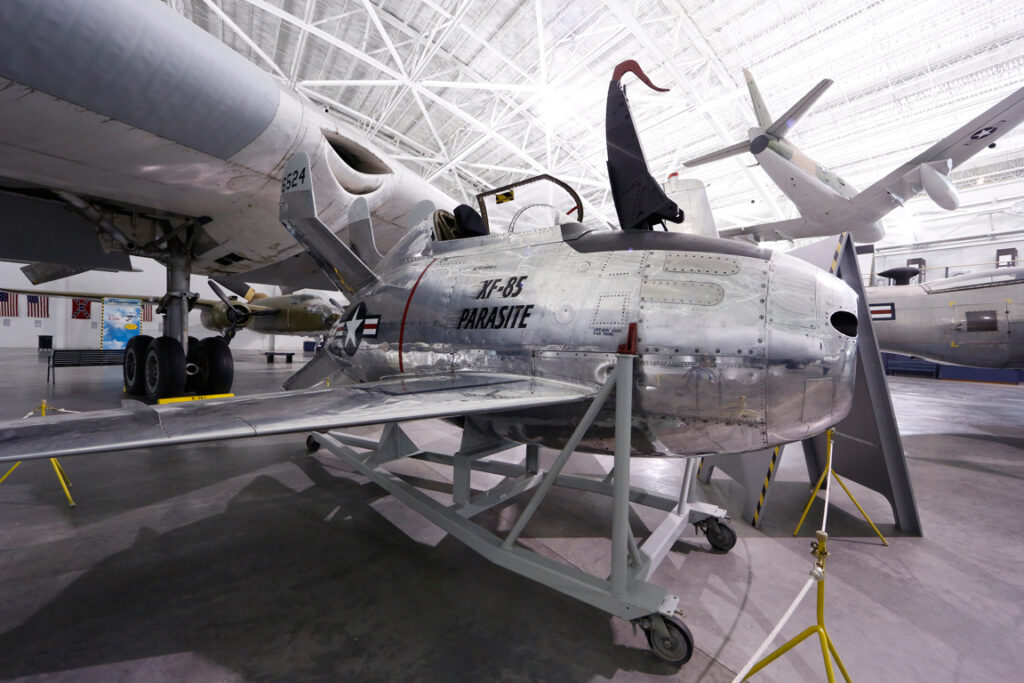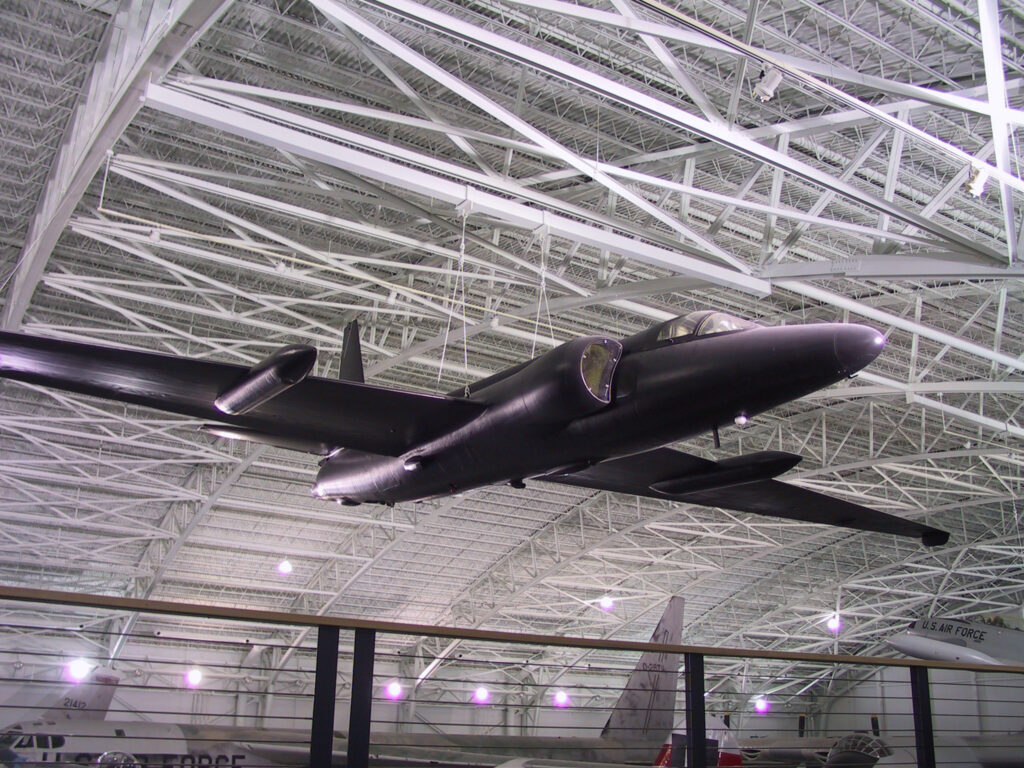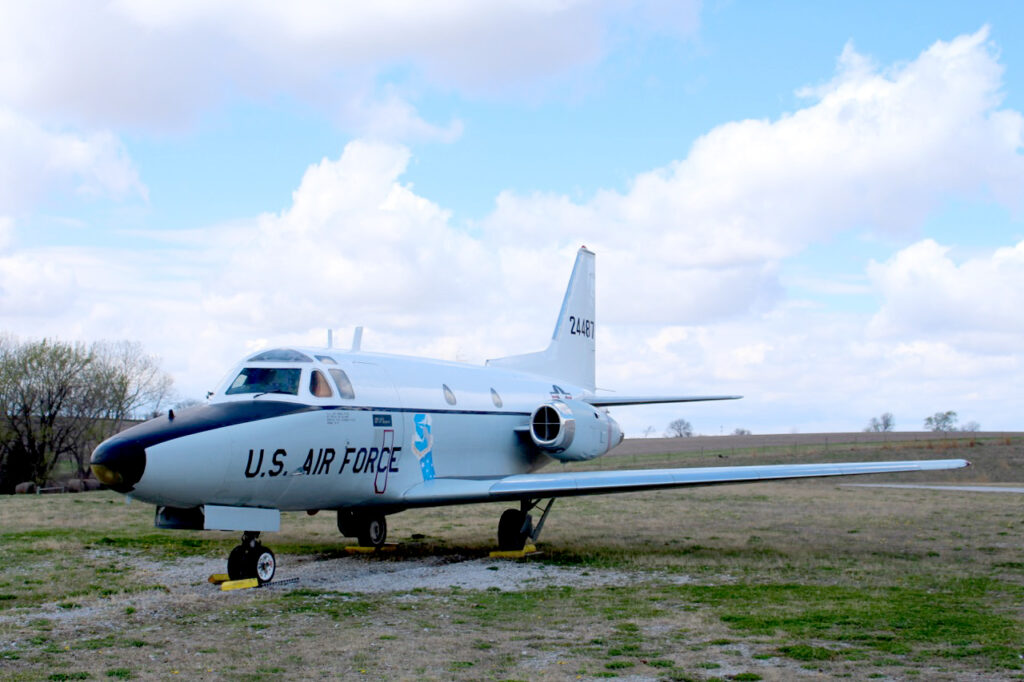Let Your Curiosity Soar
B-57E “Intruder”
The Air Force flew two high-altitude, radar reconnaissance variants of the highly successful and ever-present Martin RB-57 Canberra from mid-1956 through 1960 (after which they continued in service with other USAF commands). The Canberra was Britain’s first operational jet-propulsion bomber; it was manufactured continuously for 12 years and has served a dozen nations in several roles. In the United States, Martin copied an English Electric Canberra to produce the B-57 as a tactical strike aircraft, with the first American-built unit flying on July 20, 1953. Subsequently, two strategic reconnaissance variants were manufactured. They retain the trim Canberra fuselage but have disproportionately long wings and outsized engine nacelles. No weapons are carried.
The Museum’s B-57 was manufactured by Martin Company in Baltimore, Maryland, and delivered to the USAF on September 21, 1956.
Specifications
Aircraft Type: B-57E, S/N 55-4244, Intruder, Martin
Mission: Low-level support bomber and tactical strike aircraft
Number Built: The Air Force accepted a total of 403 B-57′s, which were all produced in Baltimore, Maryland, by the Glenn L. Martin Co. Specifically, the B-57 program comprised 8 B-57As, 202 B-57Bs, 38 B-57Cs, 68 B-57Es, 67 RB-57As, and 20 RB-57Ds. Other B-57s, such as the B-57Gs, RB-57Fs, and WB-57Fs, were the result of extensive post-production modifications.
Powerplant: 2 Wright WJ65-W-5 turbojets, 7,200 pounds thrust each
Weight: Empty 30,000 pounds, loaded 49,500 pounds, maximum takeoff weight 55,000 pounds
Dimensions: Wingspan 64′, length 65’6″, height 15’7″
Performance: Maximum speed 580 MPH at 40,000 feet, cruising speed 475 MPH, service ceiling 48,000 feet, range 2300 miles
Additional Exhibits

XF-85 “Goblin”
Learn More
U-2C “Dragon Lady”
Learn More